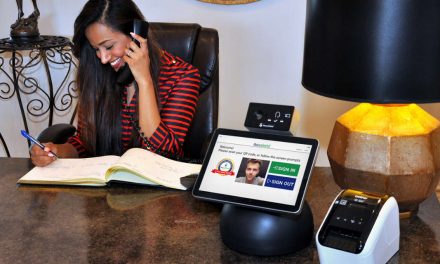By Steve Moran
I have been intrigued by robots for as long as I can remember. The fascination likely started with the 1960s television show Lost In Space.
Today, when I go to CES in Las Vegas I wander around looking at robots and wondering how they might transform senior living. They are becoming a reality, Connected Living is actively selling and supporting their Temi Robot, but the adoption is slower than I would have expected it to be.
Then a few weeks ago Joe Velderman, the Vice President for Innovation at Cypress Living posted a short video on LinkedIn of a robot they are using in their dining services department. It turns out I am not the only one who is intrigued. That post has been looked at more than 6,500 times, it has more than 200 likes and 33 comments.
I reached out to talk to Joe about their use of robots and other technology with the goal of making senior living better for residents and more cost-efficient. Here is what he had to say.
Motivation
I asked Joe about motivation:
“We ventured into this robotic thing a lot faster than I thought we would. Here in southwest Florida, we’re facing a severe staffing crisis. Right now, we probably have 55 or 60 open positions, just at our one Life Plan Community, and 25 to 30 of those are in dining services.”
They are competing against restaurants that are two-thirds empty because they cannot find staff. In addition, the minimum wage in Florida is on the way up. The director of dining services came to leadership saying, “I am out of options, I will try anything.”
Joe suggested taking a look at robots to augment what staff are doing. They reached out to Bear Robotics in California and signed a 3-year contract for a robot to help reduce the dining services staffing crisis for $999 a month.
They started with a 2-month pilot, but plan on keeping it. They are using it to cut down the number of steps wait staff need to take each day between tables and the kitchen. It is creating a better customer service experience for residents. They are able to get drink refills faster and it is easier to do things like replacing a fork that fell on the floor. Wait staff can also take care of more tables.
They are finding that the residents love the robot, to the point of thinking they may end up getting another one and that it is allowing them to recruit a higher level of wait staff.
In addition, the robot does not require time off, vacation pay, overtime pay, employee benefits, or taxes.
What’s Next?
They already have a second “robot” coming. It is made by DoorDash called “Sally 2.0”. It is a single-purpose robot that makes various kinds of “bowls”. You can put in 22 fresh ingredients and you can use it to make salads or really any kind of bowls automatically.
They are also looking at how they might use robots to support their environmental services team. Options include security, floor cleaning, and infection control.
For Cypress Living, this is all about addressing the staffing crisis and keeping senior living affordable for their residents.
I would love to hear about your experiences with robots.








